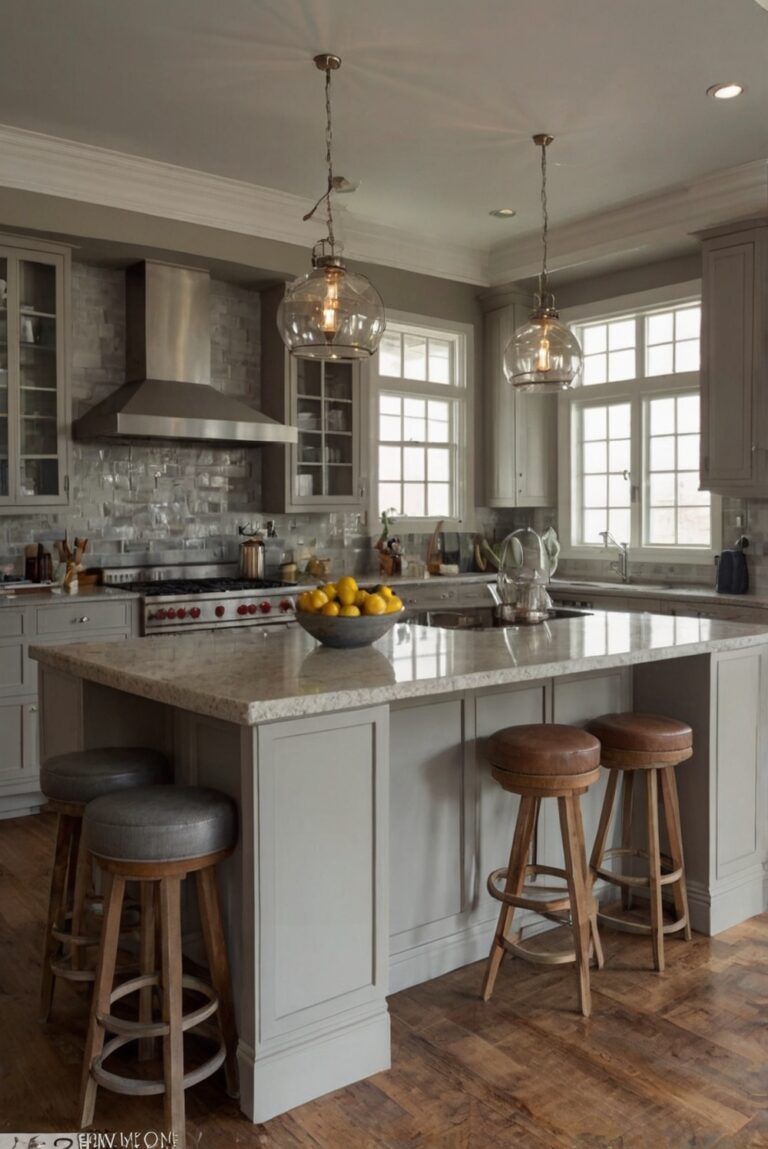Discover the seamless integration of built-in appliances with kitchen cabinet design in this daily routine guide for interior designers. Explore innovative solutions for a stylish and functional space.
To incorporate built-in appliances into kitchen cabinet design, start by carefully planning the layout of your kitchen to ensure that there is enough space for the appliances. Consider the size and dimensions of each appliance to ensure a seamless integration into the cabinets. Built-in appliances can provide a sleek and streamlined look to your kitchen, creating a cohesive design that maximizes space and efficiency.
When incorporating built-in appliances, consider the benefits of a cohesive and integrated look, as well as the convenience of having everything easily accessible within your kitchen. However, it’s important to be aware of the potential risks involved, such as the cost of installation and the need for specialized cabinetry.
To ensure a successful integration of built-in appliances, work with a professional designer who specializes in space planning and interior design. They can help you select the right appliances and design a layout that maximizes both functionality and aesthetics in your kitchen. Additionally, be sure to consider the color scheme and finishes of your cabinets to create a cohesive and harmonious look throughout the space.
By carefully planning and executing the incorporation of built-in appliances into your kitchen cabinet design, you can create a stylish and functional space that reflects your personal style and enhances the overall look of your home interior.
How to Incorporate Built-In Appliances into Kitchen Cabinet Design?
When designing a kitchen, incorporating built-in appliances into the cabinet design can create a seamless and cohesive look. Here are some tips on how to achieve this:
Plan Ahead:
One of the most important steps when incorporating built-in appliances into kitchen cabinet design is to plan ahead. Consider the size and specifications of the appliances you want to include and ensure that your cabinets are designed to accommodate them. This will help you avoid any last-minute adjustments or changes.
Consider Functionality:
When designing your kitchen cabinets, it’s essential to consider the functionality of the space. Make sure that the placement of the built-in appliances enhances the workflow in the kitchen. For example, placing the oven near the countertop can make it easier to transfer dishes in and out.
Choose Quality Materials:
Selecting high-quality materials for your kitchen cabinets is crucial when incorporating built-in appliances. The cabinets should be able to support the weight of the appliances and withstand the heat or moisture they may generate. Opt for durable materials that can withstand the test of time.
Maximize Space:
To ensure that your kitchen design is both functional and visually appealing, consider maximizing the use of space. Utilize every inch of cabinet space efficiently to accommodate built-in appliances without compromising storage capacity.
Seamless Integration:
When incorporating built-in appliances into kitchen cabinet design, aim for a seamless integration that blends the appliances with the surrounding cabinetry. Use matching finishes and hardware to create a cohesive look that enhances the overall aesthetic of the kitchen.
In conclusion, incorporating built-in appliances into kitchen cabinet design requires careful planning, consideration of functionality, and the use of quality materials. By maximizing space and ensuring seamless integration, you can create a stylish and efficient kitchen that meets your needs.
1. What are the benefits of incorporating built-in appliances into kitchen cabinet design?
Incorporating built-in appliances into kitchen cabinet design can create a seamless and cohesive look in the kitchen. It helps to maximize space utilization and creates a more organized and clutter-free environment. Built-in appliances also offer a sleek and modern aesthetic, enhancing the overall design of the kitchen. Additionally, built-in appliances can improve the functionality of the kitchen by providing easy access to essential appliances while keeping them out of sight when not in use. This integration can increase the resale value of the home and make the kitchen more attractive to potential buyers.
2. What types of built-in appliances can be incorporated into kitchen cabinet design?
Several types of built-in appliances can be seamlessly integrated into kitchen cabinet design, including refrigerators, ovens, microwaves, dishwashers, and wine coolers. These appliances are designed to fit flush with the surrounding cabinetry, creating a seamless and integrated look. Some advanced built-in appliances, such as steam ovens, warming drawers, and built-in coffee makers, can also be incorporated to enhance the functionality and convenience of the kitchen. When choosing built-in appliances, it is important to consider the overall design aesthetic, space constraints, and budget to ensure a cohesive and functional kitchen layout.
3. How can built-in appliances be incorporated into kitchen cabinet design?
To incorporate built-in appliances into kitchen cabinet design, careful planning and coordination are essential. Start by measuring the available space and determining the size and specifications of the desired appliances. Choose appliances that fit seamlessly with the cabinetry and complement the overall design aesthetic of the kitchen. Work with a professional kitchen designer or cabinet maker to create custom cabinetry that accommodates the built-in appliances and provides a cohesive look. Consider factors such as ventilation, electrical requirements, and plumbing connections when integrating the appliances into the cabinetry. Finally, ensure proper installation and alignment of the appliances to achieve a seamless and functional kitchen layout.
4. What are some design tips for incorporating built-in appliances into kitchen cabinet design?
When incorporating built-in appliances into kitchen cabinet design, consider the following design tips to achieve a cohesive and functional layout:
– Choose appliances with matching finishes and styles to create a seamless look.
– Opt for custom cabinetry that is tailored to accommodate the specific dimensions of the appliances.
– Use panel-ready appliances that can be integrated with custom panels to blend with the cabinetry.
– Consider the workflow and ergonomics of the kitchen when placing built-in appliances for easy access and usability.
– Incorporate lighting and ventilation solutions to enhance the functionality and aesthetics of the appliances.
By following these design tips, you can create a well-integrated and visually appealing kitchen that seamlessly incorporates built-in appliances into the cabinet design.
5. What are the cost implications of incorporating built-in appliances into kitchen cabinet design?
Incorporating built-in appliances into kitchen cabinet design can vary significantly in cost depending on the type of appliances chosen, the complexity of the cabinetry design, and the level of customization required. Custom cabinetry and panel-ready appliances tend to be more expensive than standard options but can offer a seamless and integrated look. Additional costs may include installation, electrical work, plumbing modifications, and ventilation requirements. It is important to factor in these costs when budgeting for a kitchen renovation or remodel that includes built-in appliances. Consider consulting with a professional kitchen designer or contractor to get accurate cost estimates and explore cost-effective options for integrating built-in appliances into the kitchen cabinet design.

